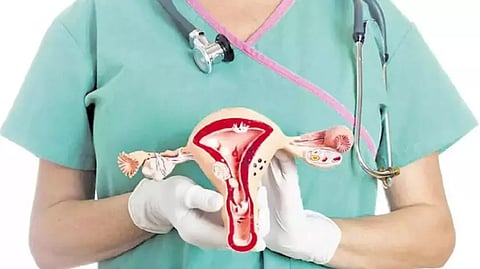

CHENNAI: Early screening and right approach of medical investigations can reduce complications and eliminate the need for unnecessary investigations for cervical cancer, revealed a research by a team of oncologists and experts from the Department of Preventive Oncology at the Cancer Institute, Adyar (WIA).
The experts also highlighted the need for a national, government-sponsored public health policy in South India, and the implementation of a high throughput technology for cervical cancer that is scalable.
The research report titled ‘Impact of HPV molecular testing with partial genotyping as a feasibility study in cervical cancer community screening program in South India’ was prepared after studying a group of 10,395 women who were administered the Human Papillomavirus (HPV) DNA test, said Dr Vijayalakshmi Ramshankar, Department of Preventive Oncology (Research), WIA.
The study showed that high‐risk HPV was found in 5.73 per cent women. A total of 127 women were found to be infected with HPV 16, 36 women with HPV 18 and 382 women with the 12 pooled high‐risk HPV, and multiple mixed infections were found in 50 women.
It was observed that there was a high prevalence of high‐risk HPV in younger women (between 30–40 years of age) and a second peak was observed at 46–50 years of age. The second peak had higher mixed infections in the 46–50 years, which the researches deemed to be a statistically significant association. The study also found that 48 per cent of the multiple mixed high‐risk HPV infections were in the age group 46–50 years.
“Elimination of cervical cancer in a country like India relies on three crucial pillars: screening, treatment, and vaccination. The Cobas HPV test offers individual results for HPV 16 and HPV 18, along with a combined result for other high-risk genotypes, all obtained from a single patient sample in a single run. By delivering comprehensive 3-in-1 results, healthcare providers can effectively assess the risk level of patients,” Dr Vijayalakshmi said.
The study showed that the high negative predictive value of Cobas HPV can help increase screening efficiency of identifying only clinically relevant infections with high-risk HPV eliminating unnecessary further intervention in nearly 94 per cent of the women.
Dr Jayashree Natarajan, assistant professor, Gynecological Oncology, WIA, said that it was possible to find a holistic solution that reaches every corner of the country by incorporating comprehensive vaccination programmes alongside robust screening processes and treating the already infected.